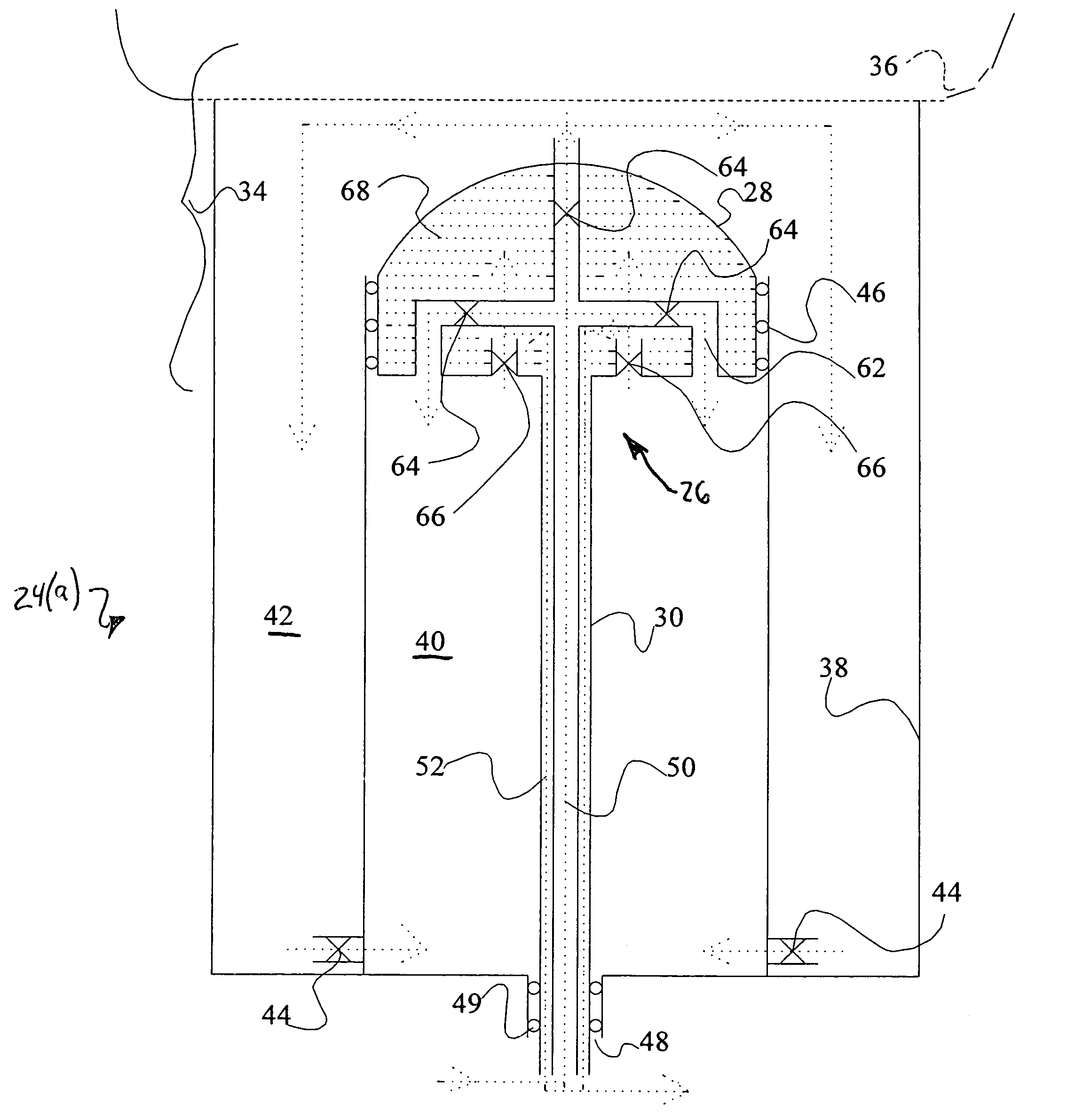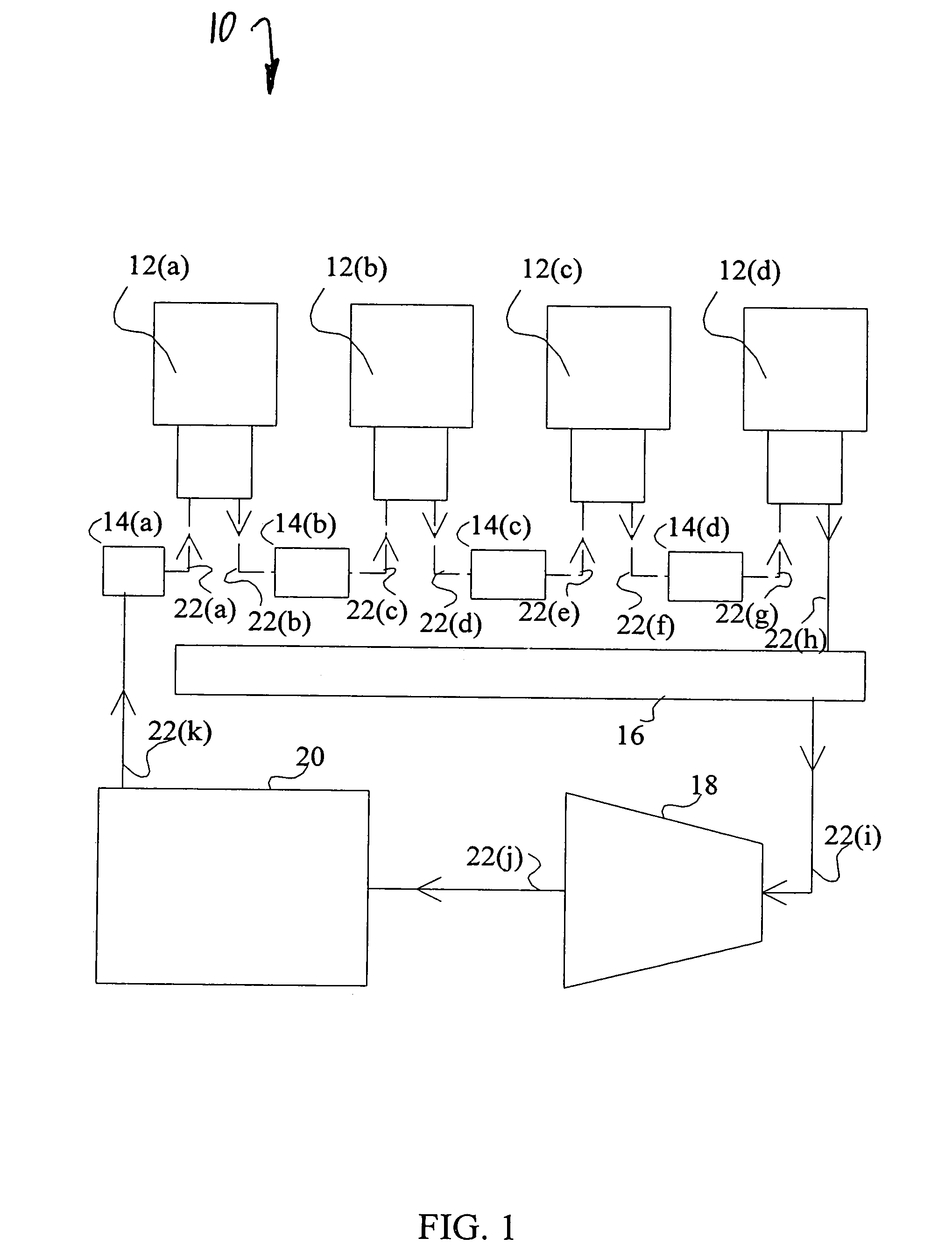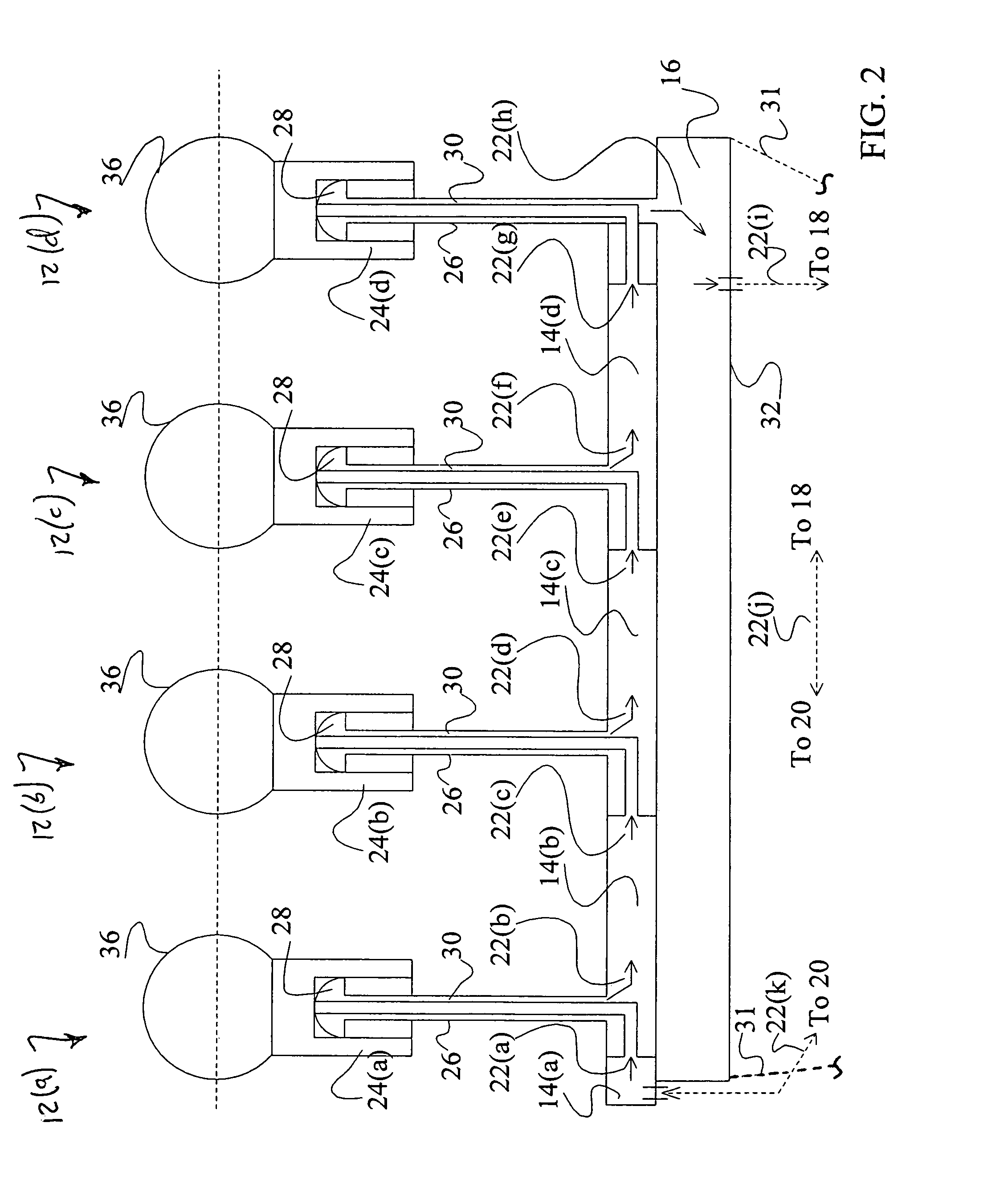Wave energy accumulator
a wave energy and accumulator technology, applied in the direction of sea energy generation, engine working fluid, coupling, etc., can solve the problems of inability to meet the minimum wave amplitude is relatively high, and the depletion rate is not acceptabl
- Summary
- Abstract
- Description
- Claims
- Application Information
AI Technical Summary
Benefits of technology
Problems solved by technology
Method used
Image
Examples
Embodiment Construction
[0038]Referring to FIG. 1, and according to a first embodiment of the invention, a wave energy accumulator system 10 converts energy of water waves into potential energy for performing useful work, e.g. by generating electrical energy, and / or directly into useful work.
[0039]The system 10 comprises multiple pressurization stages 12(a)-(d), intermediate reservoirs 14(a)-(d), a high pressure reservoir 16, a turbine 18 and electric generator assembly and a low pressure reservoir 20 all of which are fluidly interconnected by fluid flow conduits 22(a)-(k) to form a closed fluid loop system. A compression fluid is circulated through this system 10, is pressurized by the pressurization stages 12(a)-(d), and is used to power the turbine 18 which is used to generate electric power.
[0040]Instead of a closed loop system, the compression fluid may be input at the initial pressurization stage 12(a) and exhausted after exiting the turbine 18 if desired (not shown). Also, the number of pressurizati...
PUM
 Login to View More
Login to View More Abstract
Description
Claims
Application Information
 Login to View More
Login to View More - R&D
- Intellectual Property
- Life Sciences
- Materials
- Tech Scout
- Unparalleled Data Quality
- Higher Quality Content
- 60% Fewer Hallucinations
Browse by: Latest US Patents, China's latest patents, Technical Efficacy Thesaurus, Application Domain, Technology Topic, Popular Technical Reports.
© 2025 PatSnap. All rights reserved.Legal|Privacy policy|Modern Slavery Act Transparency Statement|Sitemap|About US| Contact US: help@patsnap.com



